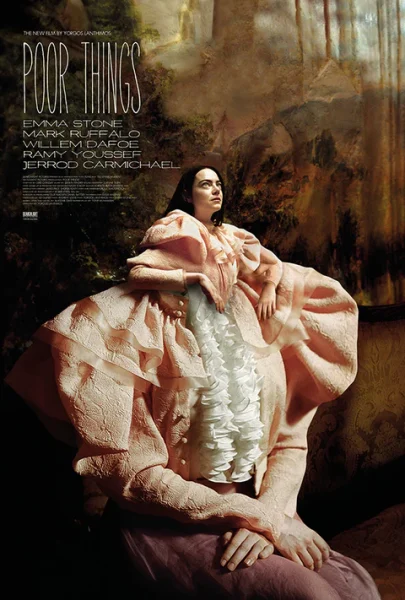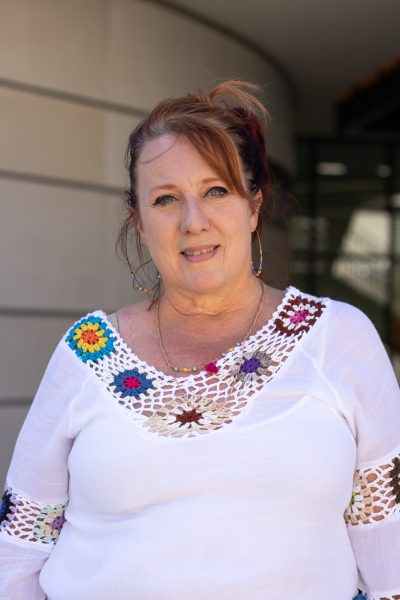OPINION: Fighting the racial discrimination of being ‘too dark-skinned’ in America
December 9, 2022
“They teach me to erase that brown, subconsciously I lose my crown till I don’t even recognize the person that’s inside me now,” are lyrics from Filipino American rapper Ruby Ibarra that have stuck with me ever since I came across her song about assimilating to Western beauty standards. It’s something I experienced growing up.
Not only was it enough to prioritize American traditions and norms over my Filipino identity. Replicating the physical traits of a Eurocentric image of beauty, most notably fair skin, was another factor of assimilation to consider.
Being a Filipino American raised by parents who moved from the Philippines to California for greener pastures, I felt the brunt of well-intentioned microaggressions that challenged my identity as a member of two cultures who never fully belonged to one. “You don’t look Filipino, you look (insert different ethnic group)” or “don’t play outside too long, you’ll get too dark” are personal examples.
What I came to realize is that when an immigrant family’s source of pride is poured into their children, they’ll advocate for anything that leads to the level of success that felt unattainable in their home country — even if that means undermining their kids’ self-worth. What better way to achieve the American dream than to erase the physical traits that urge others to question, “Where are you really from?” Targeting one’s skin color is a popular rendition of such erasure.
Colorism, the practice of treating people with lighter skin more favorably than darker-skinned individuals, is an unfortunate facet in communities of color.
It may present itself as a friend’s lighthearted joke about how your skin is so dark that you look like a video game character that hasn’t been unlocked. Colorism may also present itself as a global skin-whitening industry promoting products, like papaya soaps, to predominantly brown-skinned audiences, or as “beautifying” face filters on social media that merely lighten a user’s skin tone.

A commonly believed origin of colorism, at least in the Philippines, is that skin color was once perceived as an indicator of social class. Dark skin was associated with being poor because it was thought to be caused by working labor-intensive jobs outdoors, while the upper class had the luxury of working inside. It seems the sentiment of fair skin superiority has stayed the same since.
Growing up, hearing the phrase “you look like you can be an actor” meant one’s skin was pretty enough to be broadcasted on Filipino telenovelas, which rarely featured dark-skinned actors in lead roles from what I remembered. Being greeted by aunties and uncles with body image-obsessed comments, such as “you got darker,” were synonymous with saying “long time, no see” at occasional family gatherings. Yet, within these harmless remarks are implicit biases believing that the lighter the skin, the better.
Another issue with colorism is that it can fuel systemic racism, which goes beyond the harm of blatant verbal abuse. Examples can be seen in the United States’ criminal justice system and employment.
A study on the relationship between skin tone and incarceration of Black Americans found that the darkest-skinned Black Americans had 121% higher odds of being arrested than those with light skin. A different study on skin color and crime found that dark-skinned Black, Latino, Asian and Native American respondents had more experiences of being arrested, versus their light-skinned counterparts.
As for employment, a study found that light-skinned Black and Latino applicants were deemed more intelligent by white interviewers than dark-skinned applicants. To no surprise, a 2020 Pew Research Center survey on skin color-based discrimination showed that 42% of dark-skinned Latinos experienced an incident of being treated as unintelligent, as opposed to the 34% of light-skinned Latino respondents who have. Overall, 62% of Latinos felt like having darker skin hurts a Latino’s ability to get ahead in the U.S.
These studies don’t necessarily conclude that being dark-skinned automatically puts someone at a disadvantage. However, the relationship between skin color and discrimination is a conversation to consider having in a country with a deep history of racial injustice.
Colorism can also seep its way into how government officials use their political power. One local example is seen in the leaked audio recording of a racist conversation between members of the Los Angeles City Council, including then-Council President Nury Martinez. It also illustrates how representation isn’t everything. Just because someone “looks like you” doesn’t mean they have your best interest at heart.
Martinez, the first Latina Los Angeles City Council president and a CSUN alumna, pushed racial stereotypes about Oaxacans during a conversation about redistricting.
“I see a lot of little short dark people,” Martinez said while questioning where Koreatown’s Oaxacan population came from and how they moved to the city. Martinez concluded her racist rant about Oaxacans by commenting, “Tan feos,” which translates to, “They’re ugly.”
Although Martinez has since resigned, who knows what action she could have taken to compromise a fair redistricting process for the constituents she was elected to represent. The racist biases she held could’ve been an influence had she decided to go about redistricting Koreatown in her favor.
Similar to Martinez’s bigotry against Oaxacans, the perpetuation of racist stereotypes against people within the same ethnic group is what makes colorism a frustrating issue of friendly fire. If we can’t find peace among people we share cultural roots with, how can we focus on fighting racial injustice beyond our ethnic circle?
Colorism is a systemic-level issue to be aware of, especially when considering that some populations deemed as ethnic minorities in the U.S. are gradually becoming the majority.
Since 2010, the white non-Hispanic population has decreased by 8.6% while non-white ethnic groups have increased, according to the 2020 U.S. census. For example, the Asian population has risen by 35.5%, the Black population by 5.6%, and the Hispanic or Latino population by 23%. If there’s a time when we stop treating colorism as a minor issue, it’s now.
What first starts as a dislike for one’s skin color can potentially evolve into the oppression of an entire community of already marginalized individuals. Part of overcoming this hatred is for Black and Brown youth, including myself, to take pride in the physical traits we bear — knowing that our value is not dictated by our complexion. While others may continue to discriminate, that does not mean we have to let that colonize the way we view ourselves.










